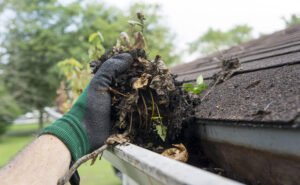 Fall is fully upon us and that means leaves! The Florida Panhandle has some gorgeous leaf displays: vibrant red dogwoods, orange and yellow cypress stands, sweetgums displaying an array of colors from red to purple and more, red maples showing off their common namesake, golden yellows of sycamores, and the brilliant shades of our various native oak species.
Fall is fully upon us and that means leaves! The Florida Panhandle has some gorgeous leaf displays: vibrant red dogwoods, orange and yellow cypress stands, sweetgums displaying an array of colors from red to purple and more, red maples showing off their common namesake, golden yellows of sycamores, and the brilliant shades of our various native oak species.

Once you enjoy the gorgeous colors on the trees, you might be tempted to clean up the leaves that then fall to the ground. Yet research suggests that leaving the leaves is better not only for you but for the planet. Here is only SOME of the benefits of leaving your leaves be:
- Leaf litter is a natural mulch and fertilizer. When left to decay naturally, it improves soil health, helps retain moisture, keeps plants warm during winter, and reduces the need to top off any store-bought mulch areas that already exist in your yard.
- You save yourself the time, energy, and potential costs associated with getting leaves removed.
- Leaf litter helps boost the ecological health of your yard! Many wonderful wildlife live or lay eggs in leaf litter including butterflies, fireflies, and more.

A few other tips that might help you out:
- Don’t mow! When you mow leaves, your chopping up all the butterfly larvae and other awesome pollinators that are living in the leaves.
- Moving leaves it okay! Rake them gently or gather by hand (don’t blow!) and transplant elsewhere.
- Do keep hard surfaces clear! If you have sidewalks, walkways, or other hard surfaces that anyone might walk on, be sure to relocate those leaves for everyone’s safety.
Rather than spend your precious and limited downtime raking leaves or – even worse – your hard earned money paying someone else to, enjoy a nice hot beverage and let the leaves be. Your wallet and the world will thank you!
 Based on
Based on 









 Have you heard that mortgage borrowers need 2 years on the same job to qualify? It’s a popular myth that is completely untrue. Many borrowers have far less than a 2-year employment history; as long as there are no gaps, clients are likely to qualify. Even if there are job gaps,
Have you heard that mortgage borrowers need 2 years on the same job to qualify? It’s a popular myth that is completely untrue. Many borrowers have far less than a 2-year employment history; as long as there are no gaps, clients are likely to qualify. Even if there are job gaps,